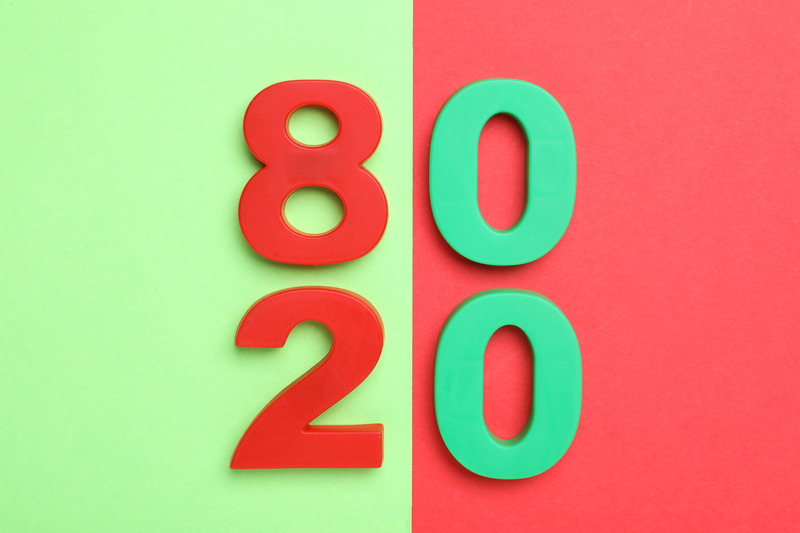In 1906, Italian economist Vilfredo Pareto noticed 20% of the pea pods in his garden were responsible for 80% of the peas. Pareto expanded this principle to economics by showing that 80% of the wealth in Italy was owned by 20% of the population. Thus, the 80/20 principle was born.
This principle can be applied to many things. Take business, for example — about 80% of revenues may only come from about 20% of customers. However, when we apply this principle to our health, specifically to our nutritional intake, we simply flip those numbers. If 80% of the time we are eating clean, whole and non-processed foods, then we are able to give ourselves more grace and not feel guilty if we consume foods that feed our spirit 20% of the time.
Take a moment to reflect on these popular nutrition plans:
- Intermittent eating/fasting: Every meal every day is eaten during a specific window of time, such as between the hours of 11 a.m. and 5 p.m.
- Six meals a day: Every day consists of six smaller portioned meals
- Elimination: Eliminate all sweets; high fat and high sodium foods; alcohol and bread
- 100% “healthy”: Every food consumed is clean, organic and non-GMO
Nutrition should be simple. While the above plans may lead to some success, they have strict guidelines that create an “all-or-nothing” mindset and allow little room for error. Therefore, when we fall off track or have a slice of cake at a family member’s celebration, our mindsets can quickly switch from all to nothing, and healthy eating habits can start to deteriorate.
It is ok to be human and enjoy a slice of cake at a celebration. It is ok to slip up. Elimination is not the answer, and neither is focusing on only consuming specific foods, a certain percentage of nutrients or a strict number of servings each day.
Rather than following a plan 100% of the time and beating yourself up every time you make a mistake, try approaching nutrition with the 80/20 mindset: 80% of the time you are fully dedicated to the healthy food choices that work for you, and the other 20% of the time you treat yourself to foods that warm your soul.
Check out the below 80/20 approach examples:
Option 1
- Breakfast: oatmeal with nuts and sliced banana, with two hard-boiled eggs on the side
- Lunch: grilled chicken, brown rice and assorted veggies
- Afternoon snack: slice of chocolate cake and a few bites of buffalo chicken dip
- Dinner: salmon, baked potato with cheddar cheese, Brussels sprouts and a side salad
In this example, the afternoon snack (slice of cake and buffalo chicken dip) were the 20% indulgence, while the rest of the day was filled with healthy, non-processed whole foods.
Option 2:
- Meal 1: two-egg omelet with feta cheese, peppers and onions
- Meal 2: one banana
- Meal 3: oven roasted turkey on whole grain bread with spinach, tomato, onion, spicy mustard, oil and vinegar
- Meal 4: sliced apples with peanut butter and dark chocolate
- Meal 5: grilled steak and roasted asparagus with a side of grape tomatoes, basil and fresh mozzarella and a glass of red wine
- Meal 6: a cup of ice cream with sprinkles
In this example, there are roughly 17 servings of food if you combine all the proteins, fats and carbohydrates. Three of those servings (20%) come from the ice cream, red wine and dark chocolate.
You can also look at the 80/20 method from the perspective of a full week of eating. If you eat three meals a day every day of the week, that is 21 meals. For 17 (80%) of those meals, you can commit to eating healthy meals that work for you, while the other four (20%) can be reserved for indulgence like ordering takeout from your favorite pizza shop or stopping at an ice cream parlor after a long hike with your family.
Eat well, and enjoy life. Think about healthy choices that are sustainable and work for you. The 80/20 approach is a great way to consume the right amount of foods 365 days a year. Happy eating!

